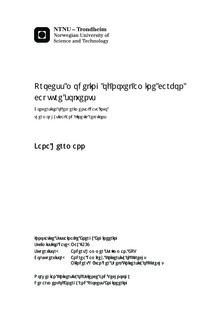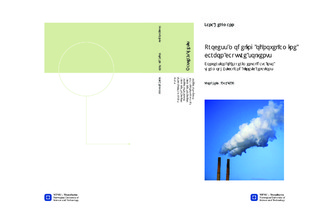| dc.contributor.advisor | Strømman, Anders Hammer | nb_NO |
| dc.contributor.advisor | Ramirez, Andrea | nb_NO |
| dc.contributor.advisor | van der Spek, Mijndert W. | nb_NO |
| dc.contributor.author | Herrmann, Jana | nb_NO |
| dc.date.accessioned | 2014-12-19T11:53:09Z | |
| dc.date.available | 2014-12-19T11:53:09Z | |
| dc.date.created | 2014-10-09 | nb_NO |
| dc.date.issued | 2014 | nb_NO |
| dc.identifier | 754220 | nb_NO |
| dc.identifier | ntnudaim:10946 | nb_NO |
| dc.identifier.uri | http://hdl.handle.net/11250/235798 | |
| dc.description.abstract | For the development of novel carbon capture solvents, process modeling is a useful tool for (inter alia) the early stage investigation of novel solvents. It represents an option for cheap but detailed prediction of process dynamics and energy requirements without direct investment in pilot plant studies. Thus, it can help to compare different solvent systems and support the decision process for further R&D investments. The number of existing process models for carbon capture solvents is quite scarce compared to the number of promising novel solvents. This master thesis aims to develop a process modeling procedure for novel post-combustion amine solvents in the process modeling tool Aspen PlusTM . The procedure will promote the development of novel amine solvents and their investigation through carbon capture process models. As a case study, an amine solvent (a piperazine activated aqueous solution of 2-amino-2-methyl-1-propanol) was selected and implemented in Aspen PlusTM. Based on the understanding of the thermodynamic model theory, literature of modeling of carbon capture solvents in Aspen PlusTM and expert elicitation, the data requirement was identified. Moreover, a method for transferring experimental data into the modeling tool to obtain the required correlations was developed and a general modeling procedure was formulated and applied to the selected model. After reviewing and validating of available data from literature and Aspen PlusTM, remaining required parameters were obtained by regression of experimental vapor-liquid equilibrium data and adjustment of parameters. Based on the developed equilibrium model of the solvent system a simple absorption process was modeled, to investigate temperature and concentration profiles over the absorber. The developed modeling procedure for amine solvents in Aspen PlusTM and the gained experience during the parameter regression facilitates the understanding of the modeling and promotes the use of process simulation tools for the investigation of PCC solvents. However, it also made evident the need for further research and investigation. | nb_NO |
| dc.language | eng | nb_NO |
| dc.publisher | Institutt for energi- og prosessteknikk | nb_NO |
| dc.title | Process modeling of novel amine carbon capture solvents: Conversion of experimental data into thermophysical and kinetic relations | nb_NO |
| dc.type | Master thesis | nb_NO |
| dc.source.pagenumber | 156 | nb_NO |
| dc.contributor.department | Norges teknisk-naturvitenskapelige universitet, Fakultet for ingeniørvitenskap og teknologi, Institutt for energi- og prosessteknikk | nb_NO |

